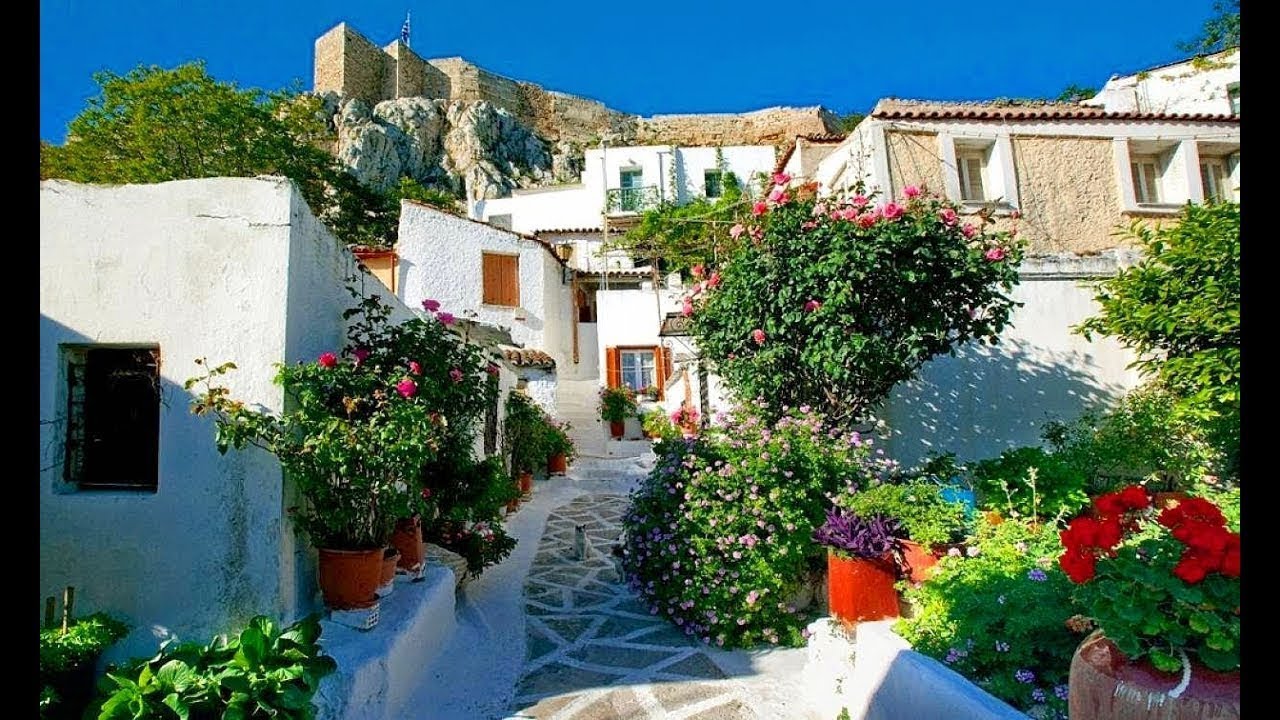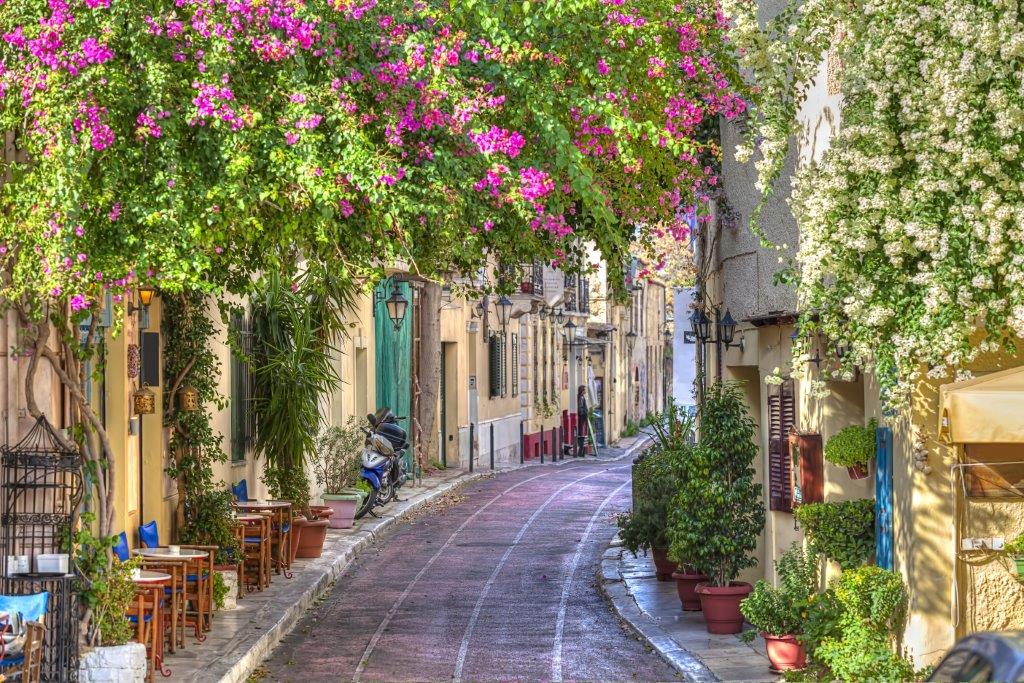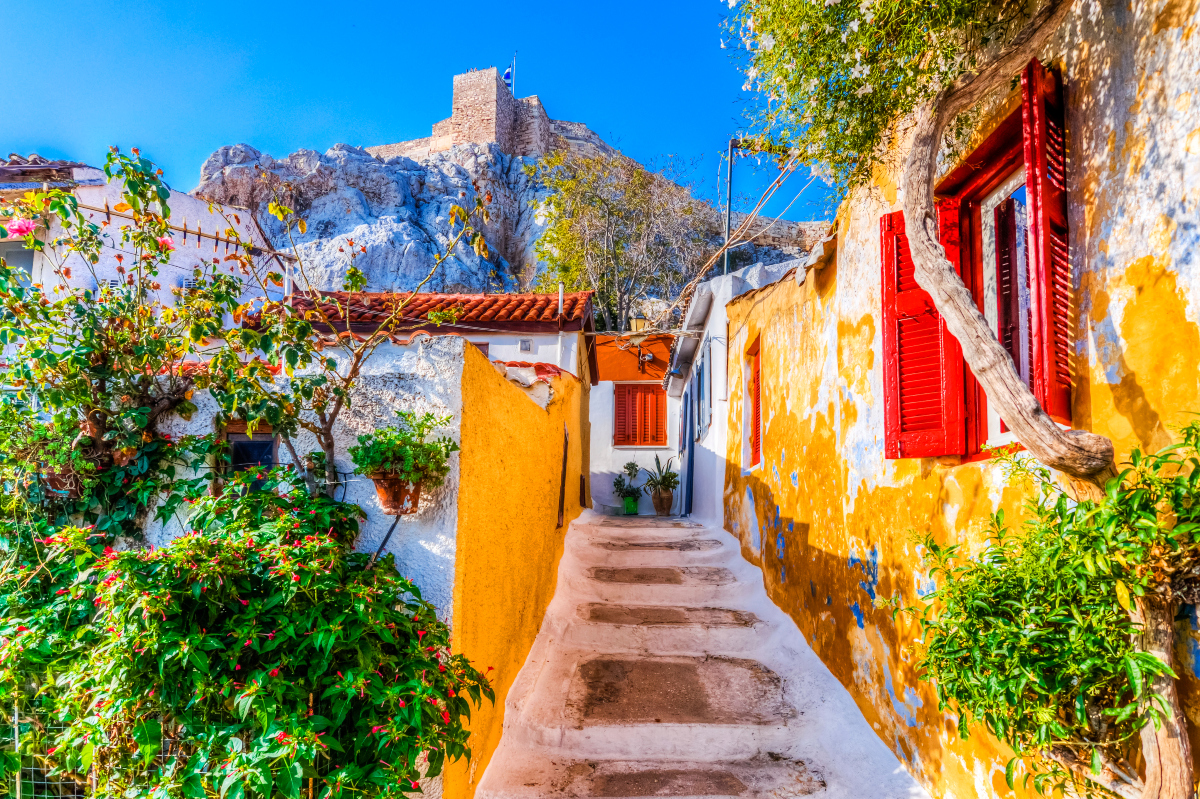A small island in the centre of Athens
Anafiotika is a small neighborhood under the rock of the Acropolis. They are reminiscent of a Cycladic island with the characteristic cobbled alleys, many in width that can fit two people at a time, low whitewashed houses with blue windows and bougainvilleaσ. Anafiotika acquired its current image in the 1860s, when two carpenters from Anafi built two arbitrary houses here. Various fellow citizens found the idea good and they followed their example and so the neighborhood was created.

In 1834 a decree was passed according to which the area was considered an archeological zone, in which any reconstruction was prohibited. A similar ban was in force in ancient Athens of Pericles, which was also violated by refugees from the Peloponnesian War who came and settled here seeking refuge away from the affected municipalities of Attica.
Few houses are left today in Anafiotika, although there were more, many of which were demolished in the 1970s, when the settlement was deemed arbitrary. There are no streets in Anafiotika, each house just has its own number, and that’s it. The inhabitants of Anafiotika and the inhabitants of Plaka had, at the beginning of the 20th century, a great hatred. The inhabitants of Plaka did not let the “villagers” frequent Philomousou Square and the Anafiotes responded by banning the movement of every resident of Plaka in their neighborhood.

The easiest, and most popular, access to Anafiotika is from the steps that start at the side of the church of Agios Georgios. When you start climbing them, you will have the impression that they end up in a dead end, keep climbing, this is how almost all the alley-steps in Anafiotika look like. To reach the church of Ai-Giorgis, the route with the least uphill is the one that starts from Thespidos street, which is a continuation of the noisy Kydathinaion street and then turns right on Stratonos street
Anafiotika once called “Black stones”, during the Turkish rule, because here were the homes of slaves from Africa. “A few black families, slaves since the time of the Turkish occupation, emerged from their low mud houses” writes Hans Christian Andersen about the neighborhood in “Travels in Greece” in 1841.
The district acquired its current image in the 1860s, when two craftsmen from Anafi, Georgios Damigos and Markos Sigalas, built two arbitrary houses here. Several of their fellow townspeople found the idea good, followed suit, and the rest is History.

In 1834 a decree was passed on the basis of which the area was considered an archaeological zone, in which any reconstruction was prohibited. A similar ban was in place in the ancient Athens of Pericles – which was also violated, by refugees from the Peloponnesian War who came and settled here seeking refuge away from the stricken municipalities of Attica.
45 houses of Anafiotika remaining today, there were more, many of which were demolished in the 70s, when the settlement was deemed arbitrary.
A unique low terrace enjoys views of the magnificent immensity of the city and Lycabettus beyond
There are no streets in Anafiotika, each house has its own number.
Anafiotes and Plakiotes had, at the beginning of the 20th century, great enmity. The residents of Plaka did not let “villagers” frequent Filomousou square – and the Anafiotes responded by prohibiting the movement of every Plakiot in their neighbourhood.
The easiest, and most popular, access to Anafiotika is from the stairs that start on the side of the church St George of the rock. When you start climbing them, you will have the impression that they end in a dead end, get used to it and keep going up, this is how almost all the streets-stairs in Anafiotika look like.
To get to Agios Georgios church , take the route with the least uphill is the one that starts from Thespidos (a continuation of the bustling Kydathinaion) and then turns right to Stratonos.
At Anafiotika there are two small churches , which used to divide them into two parishes: Agios Georgios of the Rock and Agios Simeon at the western end of the neighborhood. Both were rebuilt by the Anafiotes who came to stay here, finding them half destroyed.
